wikiHow is a “wiki,” similar to Wikipedia, which means that many of our articles are co-written by multiple authors. To create this article, 77 people, some anonymous, worked to edit and improve it over time.
wikiHow marks an article as reader-approved once it receives enough positive feedback. This article received 13 testimonials and 91% of readers who voted found it helpful, earning it our reader-approved status.
This article has been viewed 1,646,350 times.
Learn more...
Gunpowder, also called black powder, is a simple mixture of saltpeter, sulfur, and charcoal. The trickiest part of making black powder is sourcing these three supplies. Once you find them, you mix them together and create an explosive black meal. Be extremely cautious when handling black powder, and make sure to store it away from heat and flame. Read on to learn more about how to make gunpowder.
Steps
Collecting the Ingredients
-
1Get your hands on some saltpeter. Saltpeter is the common name for potassium nitrate. In the days when black powder was widely used, saltpeter was manufactured from bat guano or made from horse urine and other "manure soils."[1] It's used in many fertilizers, as part of science projects, and in certain recipes. You have several options for sourcing saltpeter:
- Look for "stump remover" in garden stores. Saltpeter is often sold under this name. You may also find it labeled as saltpeter, niter, or potassium nitrate.[2]
- Buy it online. If you do a search for saltpeter, you'll get plenty of results, and you can easily have a bottle delivered to you.
- Make it yourself out of a cold pack. Cold packs which can be bought for a few dollars to help with sore muscles contain sodium nitrate and water and can be used to make saltpeter.
- Make it with urine. This is definitely the most difficult way to source saltpeter, but some black powder enthusiasts prefer to make their powder entirely from scratch. To do so, one process is to fill a drum with manure affixed with a drain, valve, and filter at the bottom. Urinate into it, then top it off with water. After about 10 months, dry it out on trays.[3]
-
2Obtain charcoal.[4] You can use standard charcoal that you buy to cook with your grill, which you'll need to grind to a fine powder. If you're a purist, make your own charcoal by filling a metal drum with 3-inch pieces of willow or another wood, then placing the drum in a bonfire with a loose lid on top (to allow for airflow). Keep the bonfire piping hot for 4-6 hours, then open the drum. The wood will have charred into fine pieces of homemade charcoal, perfect for use in gunpowder.Advertisement
-
3Get elemental sulfur. This naturally-occurring substance is often used to acidify the soil, so you can find it in garden stores or from online sources that sell garden supplies. Elemental sulfur occurs naturally and is mined from beds in Texas, Louisiana, Italy, and other locations around the world.[5]
Mixing the Ingredients
-
1Finely grind the ingredients.[6] Use a mortar and pestle to grind each ingredient into a fine powder. Grind each ingredient separately, cleaning the mortar and pestle in between uses.
- You can use a ball mill to grind the components if you're planning on making a lot of gunpowder. A ball mill is used to both grind and mix powders safely.
-
2Measure out the gunpowder components. Using the right ratio of ingredients is very important when you're making gunpowder. Calculate the percentage by weight, using a small scale to weigh the different ingredients. Here's how much you need:
- 74.8% saltpeter
- 13.3% charcoal
- 11.9% sulfur
-
3Mix the ingredients together.[7] Moistening the powders before mixing is the safest but not only procedure. Place them all in the mortar, moisten for safety, and grind them together with the pestle for 10 minutes or longer. If you're using a ball mill, mill the charcoal and sulfur together for 4 hours first, then add the saltpeter and mill the mixture for another 24 hours.
- Be extremely careful around the black powder once it has been mixed. Do not smoke or light a flame anywhere close to the powder, and keep it away from heat.
-
4Consider adding water. Some say adding up to 8% of water can improve the gunpowder's burning. Continue mixing the gunpowder, adding water in small increments until the gunpowder is the texture of thick clay. Form it into a ball when you're finished.
- If you mix the gunpowder with water, you'll need to corn the gunpowder, or break it up into small pieces. Run the gunpowder ball through a kitchen sieve to break it into small pieces, then let the pieces dry out on a piece of paper.
- Again, be extremely careful around the gunpowder. Exercise caution at every stage.
-
5Store the black powder safely.[8] Place the black powder in a special container designed for gunpowder. Consider storing it in a fireproof box in a shed or another area outside your home. In any case, store the black powder in a stable area where it will not come into contact with a flame or be exposed to high temperatures.
- You can buy powder containers at hardware stores or online.
- Some recommend using empty (unused) paint cans to store black powder.
- Note that it is also illegal in some areas to store explosive materials in a residence or dwelling.[9] If in doubt about the proper way and location in which to store gunpowder, contact your state field office of the Bureau of Alcohol, Tobacco, Firearms and Explosives (U.S.) or the equivalent authority in your country.
Community Q&A
-
QuestionWhat will happen if I use elemental carbon instead of charcoal?
 Community AnswerIt will fizzle out. The process requires the large burning surface exposed in charcoal to work well. Elemental carbon or graphite exposes much less area. It burns, but slowly.
Community AnswerIt will fizzle out. The process requires the large burning surface exposed in charcoal to work well. Elemental carbon or graphite exposes much less area. It burns, but slowly. -
QuestionWhat is the reaction called when gunpowder is used?
 Community AnswerThe reaction is called an exothermic reaction, meaning a reaction that expels energy. The opposite is endothermic.
Community AnswerThe reaction is called an exothermic reaction, meaning a reaction that expels energy. The opposite is endothermic. -
QuestionWill sulfur burn easy, or not at all?
 Community AnswerSulfur does not burn easily, but once it gets started, it burns slowly and very hot. It will help keep your blackpowder burning.
Community AnswerSulfur does not burn easily, but once it gets started, it burns slowly and very hot. It will help keep your blackpowder burning.
Warnings
- Wear a mask⧼thumbs_response⧽
- Wear gloves⧼thumbs_response⧽
- Do not smoke around gunpowder⧼thumbs_response⧽
- Wear heavy clothes⧼thumbs_response⧽
- Do not use a metal bowl and a metal spoon (sparks could ignite the mixture).⧼thumbs_response⧽
- If you are working the ball mill on a table, remove the nails; just use glue.⧼thumbs_response⧽
- Do not use this gunpowder to modify fireworks it is illegal and very dangerous⧼thumbs_response⧽
- To safeguard yourself, place sandbags around mill so explosion will be directed in the air.⧼thumbs_response⧽
- Ball mills should never be operated inside living spaces. They should be operated outside in an area free of people. Use explosive signs to warn people of the hazard. Also, use some protective walls in case the mill explodes the fragments won't hurt someone. Stay away while the mill is running.⧼thumbs_response⧽
- Use only non-sparking media in the ball mill such as lead.⧼thumbs_response⧽
- Keep debris that could fly, such as rocks or metal, away from the mill as they could hit you in an explosion.⧼thumbs_response⧽
Things You'll Need
- High purity sulfur
- Charcoal (the higher mesh the better)
- Potassium Nitrate
- A scale
- Mortar and pestle or ball mill
- Powder container
References
- ↑ http://www.nytimes.com/1861/08/10/news/gunpowder-its-manufacture-where-it-made-materials-where-found-new-discovery.html
- ↑ http://cavemanchemistry.com/oldcave/projects/gunpowder/
- ↑ http://www.todayifoundout.com/index.php/2013/04/urine-facts/
- ↑ https://www.youtube.com/watch?v=pm-7WzUrmzo
- ↑ http://cavemanchemistry.com/oldcave/projects/gunpowder/
- ↑ https://www.youtube.com/watch?v=pm-7WzUrmzo
- ↑ https://www.youtube.com/watch?v=pm-7WzUrmzo
- ↑ https://www.epa.gov/sites/production/files/2015-05/documents/9530608.pdf
- ↑ https://www.atf.gov/explosives/qa/may-person-store-explosive-materials-residence-or-dwelling
About This Article
To make gunpowder, start by buying saltpeter, which you can either do online or by looking for stump remover at a garden store. Then, grind separately the saltpeter, charcoal, and elemental sulfur into powders using a mortar and pestle. Before mixing the powder, decide how much gunpowder you want, then use a scale to measure out the components, which should be 74.8 percent saltpeter, 13.3 percent charcoal, and 11.9 percent sulfur. To mix the ingredients, put them in a mortar and pestle, dampen them with water for safety, and grind them for 10 minutes. For tips on how to store gunpowder safely, read on!
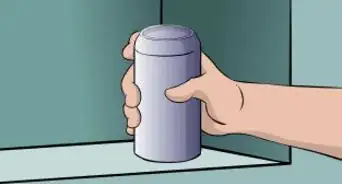

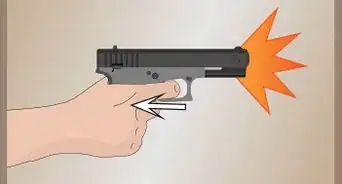
-Step-5-Version-3.webp)
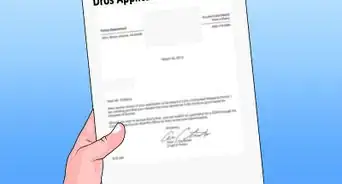


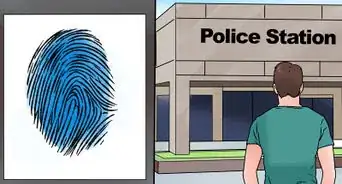




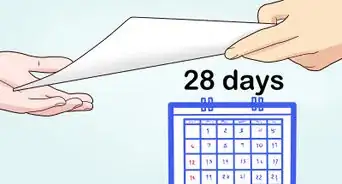











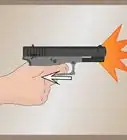
-Step-5-Version-3.webp)


































